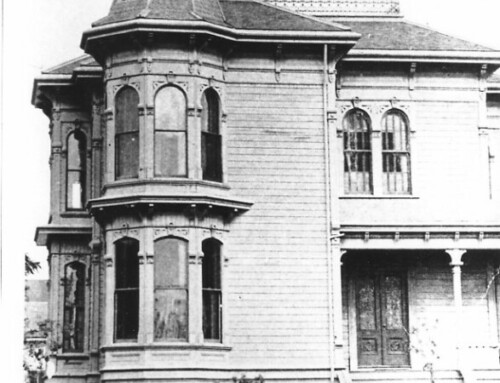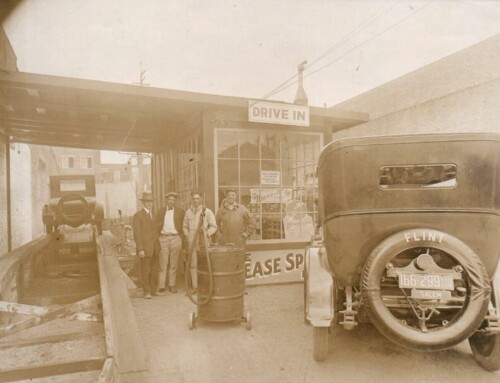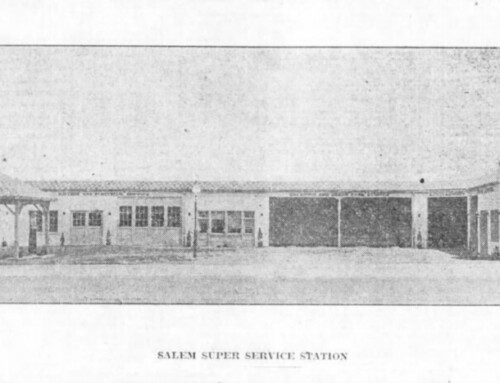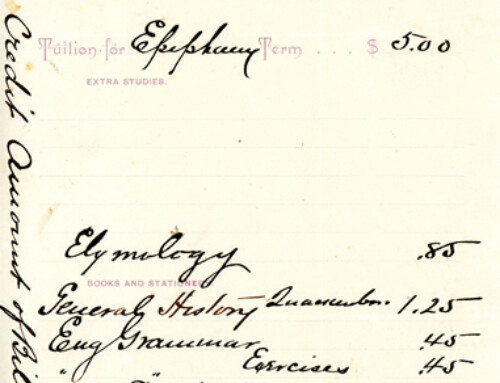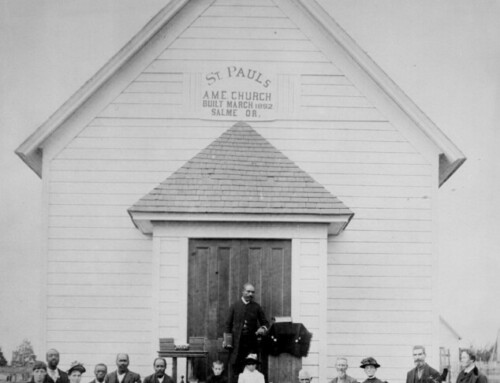Asten-Hill Manufacturing Company, located at 859 Seventh St. in West Salem, began operations in July 1955. Initially leasing the former Oregon Flax Textiles plant, the company produced dryer felt, a heavy woven fabric used in the paper-making process to extract moisture from paper. The product was tailor-made to order, with a maximum width of 260 inches and any length, and was not intended for general consumer use. It was produced for paper-making industries throughout the Pacific Northwest and Western Canada, including companies like Oregon Pulp and Paper Co. in Salem.
The plant started with 50 employees and grew to over 200, including weavers, winders and splicers. It ran three shifts around the clock, five days a week. The Salem plant manager was Ernest Liszewski, formerly of National Automotive Fibres in Oakland, CA. The Asten-Hill plant was the only one of its kind on the West Coast.
In December 1956, Asten-Hill purchased the buildings and grounds of Oregon Flax Textiles for $350,000. The Salem plant covered about 80,000 square feet and spanned over four acres. In 1988, the company changed its name to Asten-Dryer Fabrics. In 1994, just shy of 40 years operation in Salem, the corporation closed the West Salem plant as a cost-cutting measure.
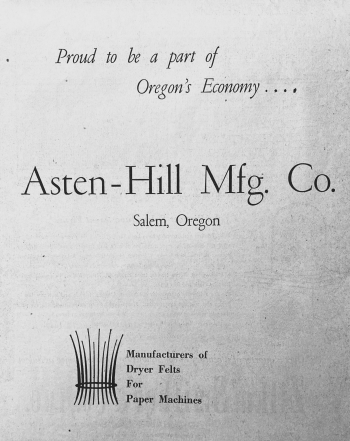
Asten-Hill Manufacturing Co. advertisement from Oregon Statesman Centennial insert, WHC Collections X2015.009.0007
Description of Process
Until the early 1970s, the Salem plant made belts from asbestos and cotton. Synthetic yarns then took over, with nylon proving strong but absorbing up to 4% water. Only by combining it with polyester, which absorbed only about 0.4% water but lacked heat resistance, could the Salem plant produce an extra strong cloth.
Looms at the plant converted the spools and polyester into cloth ranging from 180 to 350 inches wide and up to 570 feet long. These fabrics became continuous belts for the dryer sections of paper machines in paper plants across the West. The improvements resulted in belts that lasted one or two years, at least double the life of the previous asbestos-cotton belts.
Making the basic cloth was only the first step. Uniformity was vital for making smooth paper, so inspectors checked each side of the fabric multiple times to correct any loose threads or knots by hand. When the cloth was put on a paper machine, it became an endless belt running at high speeds. To reduce abrasion and add strength, the cloth was coated with resins and heat was applied to set the chemicals.
The seams at each end had to be both strong and smooth. Special looms wove the seam tape, and some new seams had loop ends sewn by hand. A wire was threaded through the hooks at each end of the cloth to make the continuous belt. Despite being woven cloth, these belts were still called felts.
The felts ranged in price from $3 to $6 per square foot, with individual cloths priced between $4,000 and $35,000. While paper manufacturing plants and their machines looked similar, each paper machine was different. Engineers continually made changes before, during, and after installation of the felt, meaning every cloth was virtually made to order. This created an inventory problem for felt makers, as they couldn’t have one pile of cloths to serve multiple plants.
Inventory was a significant cost, with every cloth on a machine needing a backup at the paper mill and one in reserve in Salem. Depending on the type of paper being produced, or the customer’s preference, the weave of the cloth would vary. Additionally, each paper mill superintendent specified the type of binding to be used at each end, with different bindings needed for machines running at higher speeds compared to slower ones.
THEN: Asten-Hill Manufacturing
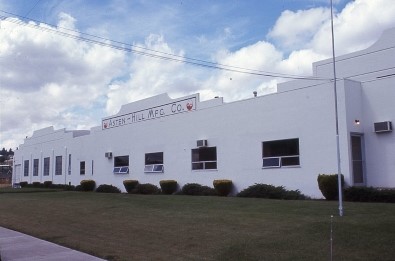
Asten-Hill Manufacturing Company located in West Salem. WHC Collections, X2012.016.1358
NOW: McGinnis Restoration & Construction / ServPro
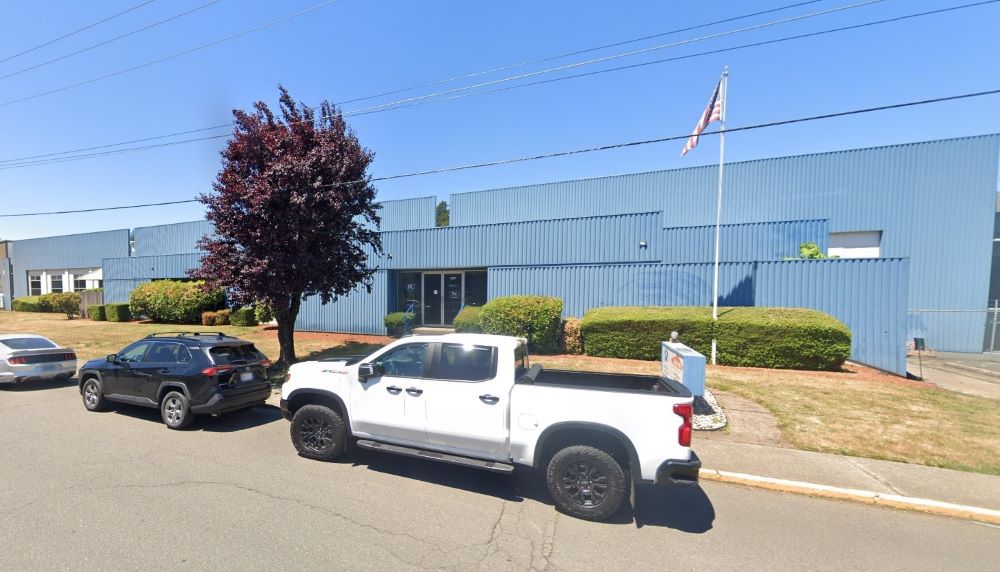
Former site of Asten-Hill Manufacturing Co. at 859 Seventh St. West Salem, OR. Image is taken from Google Earth, June 2024.
References:
“Looms Moved Into Asten-Hill Plant in Salem”, Oregon Statesman, 21 July 1955, p. 1
“Salem’s Newest Industry Will Aid in Making Paper, Oregon Statesman, 8 Aug 1955, p. 4
“Flax Property Here Sold for Near $350,000,” Capital Journal, 14 Dec 1956, p. 1
“Production of Dryer Felt, Stationery Explained to Club,” Oregon Statesman, 9 Jan 1958, p. 5
“Salem firm’s ‘felts’ key to making of paper,” Oregon Statesman, 13 Dec 1981, p. 122, 129
“The Asten-Hill Co. now has a new name,” Statesman Journal, 15 Oct 1988, p. 17
“Salem textile plant to close,” Statesman Journal, 8 Sep 1994, p. 20
Asten-Johnson website, www.astenjohnson.com/about/history



